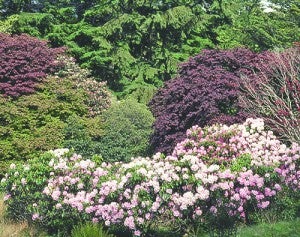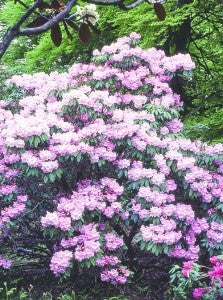A hidden treasure
Published 11:54 am Saturday, February 6, 2016
by James D. Howell
At breakfast, we tell Mrs. Mckenzie that we’re going to the gardens that she mentioned yesterday. She expands on the directions. It’s just out of the village along the A830. Where the road curves to the left, there’s a path that goes straight ahead. That’s the closest entry to the gardens; another entry is through a stone wall opening a little further along the road.
Mrs. McKenzie tells us that a man used to live there and cared for the plantings for several years after the original owner died. People in the village knew him well.
We find the vehicle path without difficulty, veer slightly right onto its two tire tracks. There’s no poster or signboard or any other indication that these gardens exist. First appears massive ferns, indicating ample water. I’m a little surprised; ferns to me are warm climate botanicals. The entry doesn’t appear to be anything special. Then they begin.
First we see a few smallish azaleas, apparently planted within the last few years. Then the view opens out into a grassy area, with a visual montage of various shades of green from different trees, planted to show off the foliage. Smaller paths branch out to other plantings and vistas.
Everything seems to be in full bloom. Rhododendrons 20 feet high, limbs drooping with full blossomed branches paint the perimeter space with color. Red, many shades of pink from almost white to almost purple, and yellow shading to light green dominate the garden’s paths and borders.
We come upon the deteriorating remains of the estate house that was in the process of being built when the owner died. Walls, some chimneys and an abandoned, built in stove remain as reminders of the lost wealth. The original estate was used as a private garden, specifically for growing rhododendrons.
The owner planned this garden, with all the barrier trees that we noticed on our arrival. They keep this indentation of the coastline protected from wind; the mountains to north moderate winter storms.
The organic, protected basin is ideal for rhododendrons and similar shrubs.
We find a gardener’s shack not far from the house ruins. Maintenance of the gardens has been sketchy for several years. At various times, it has been cared for by the National Trust; mostly, it has been left up to volunteers at the local level. Locals are responsible for the new plantings that we see along pathways.
Writer’s note: In 2003, about 20 years after our visit, the wonderful gardens at Arisaig became listed in the Inventory of Designed Landscapes in Scotland. Along with the listing, much of their history was resurrected and published. The following is a summary gleaned from several sources:
A wealthy Scotsman, John Holmes, loved rhododendrons. He collected and cultivated hundreds of varieties of the showy shrub; he was a charter member of the Rhododendron Society. His primary residence became too small for the collection.
He leased 11 hectares on the bend of the road close by Arisaig, and set about planting several varieties of trees in a design to buffer the raw north winds, and provide a varied neutral color backdrop for the flowers. The design originally had four sections. All the land was/is part of Arisaig Estate, a large traditional Scottish family/clan landholding.
Mr. Holmes planted some 200 varieties of rhododendron throughout the lease holding and began to remodel/expand an existing cottage on the property.
With his death in 1938, construction stopped on the cottage and many of the plants were sold. Survivors of Mr. Holmes varieties can be found throughout the United Kingdom.
Many varieties were left in place for one reason or another, and these, along with other more recent flowering shrubs, are what we experienced on our trip.
A gardner, John Brennan, continued to live on the property until 1959. I believe the gardener’s shack of our visit is the brothy that Mr. Brennan lived in, without any modern conveniences. Since 1960, the gardens have been cared for by various organizations and local persons.
I’m glad that we did not have the benefit of the garden’s history at the time of our visit. I like the magical impact of finding a hidden treasure in plain sight.
JAMES D. “ARCHIE” HOWELL is a Southampton County native and 1955 graduate of Franklin High School. He can be reached at archiepix@kingwoodcable.com.









